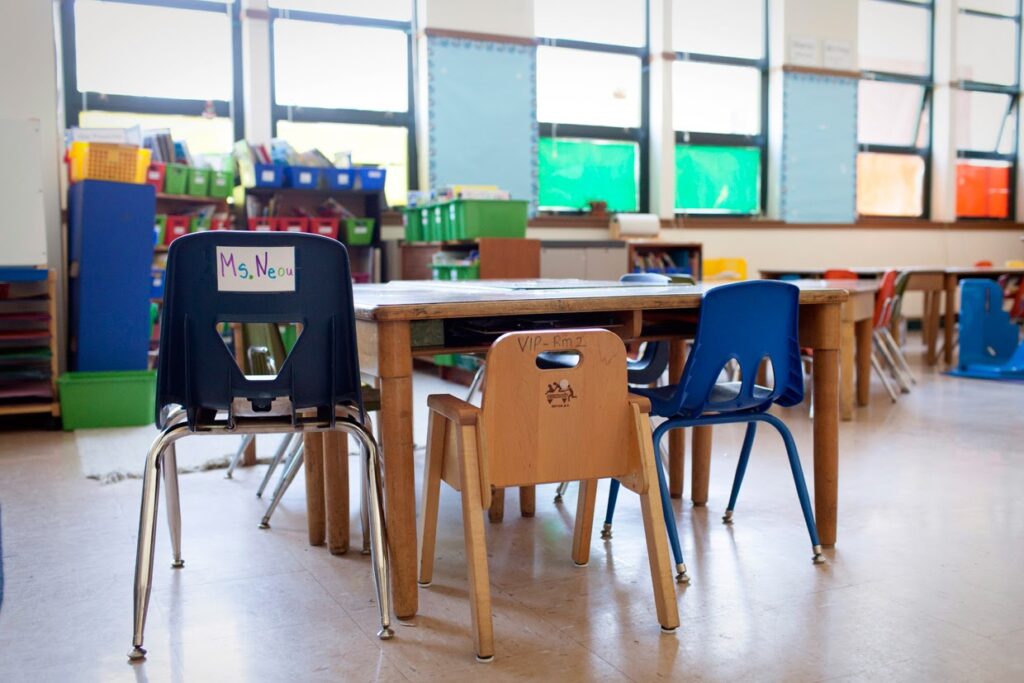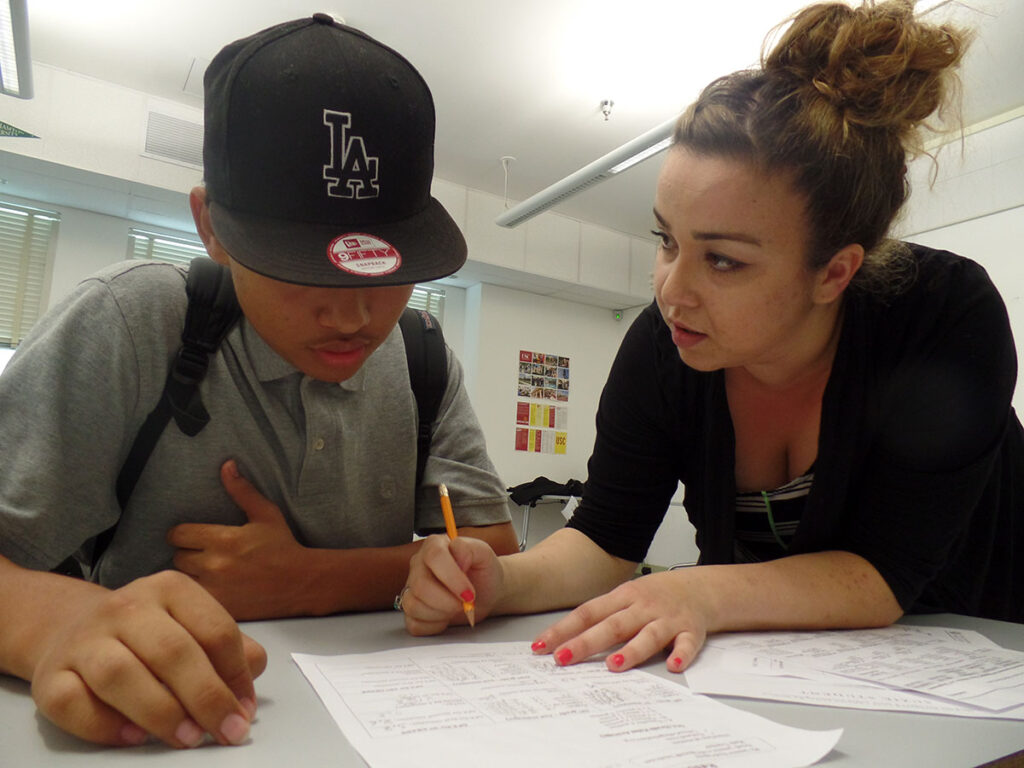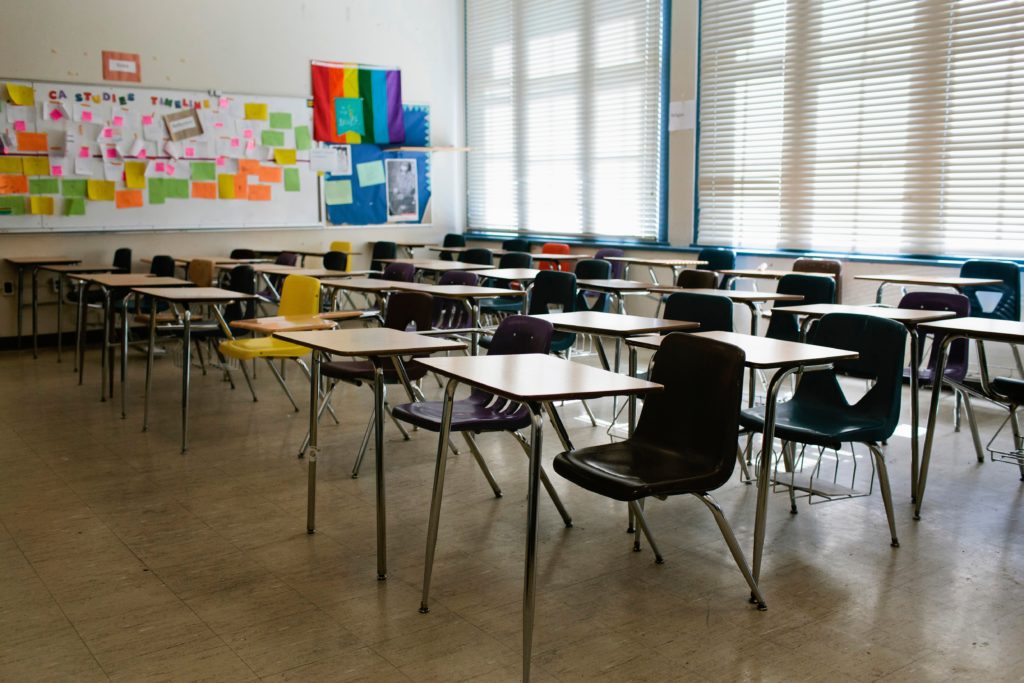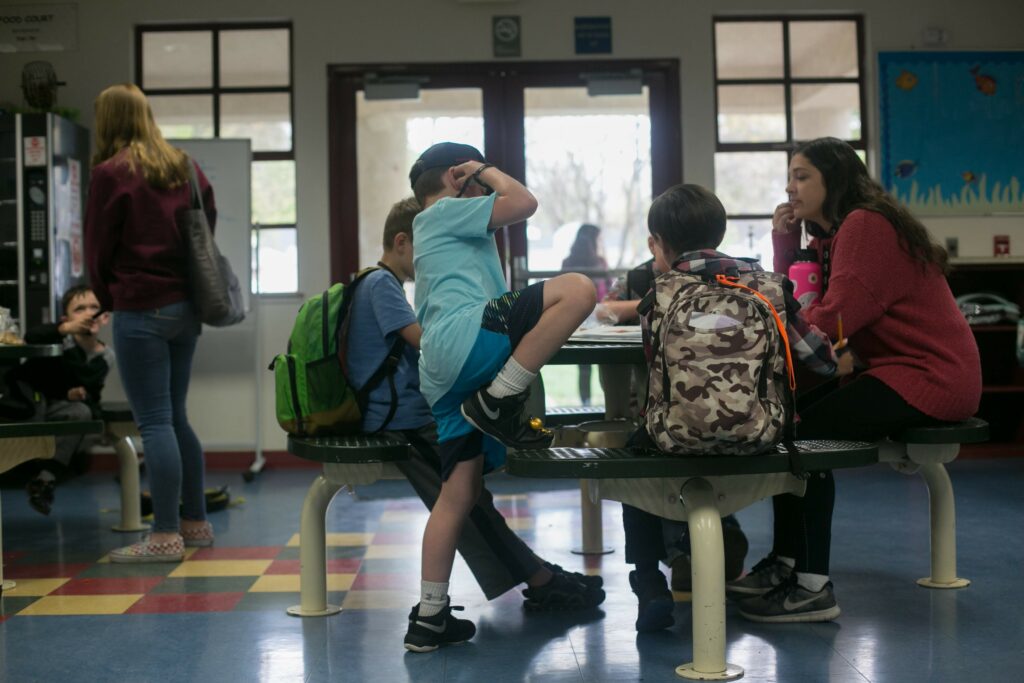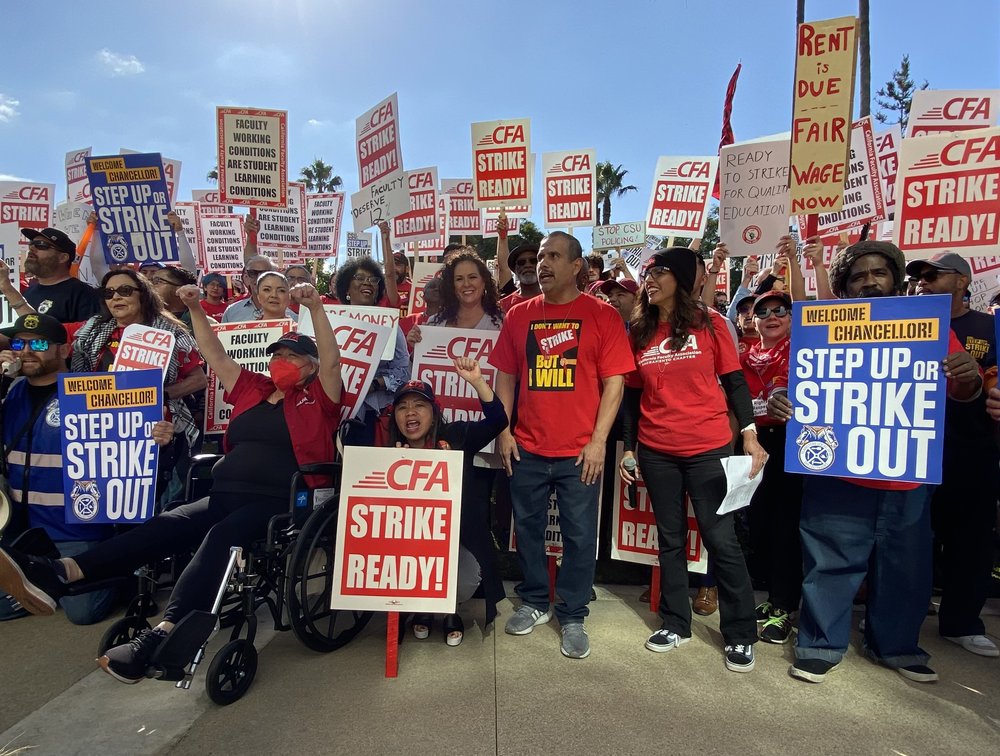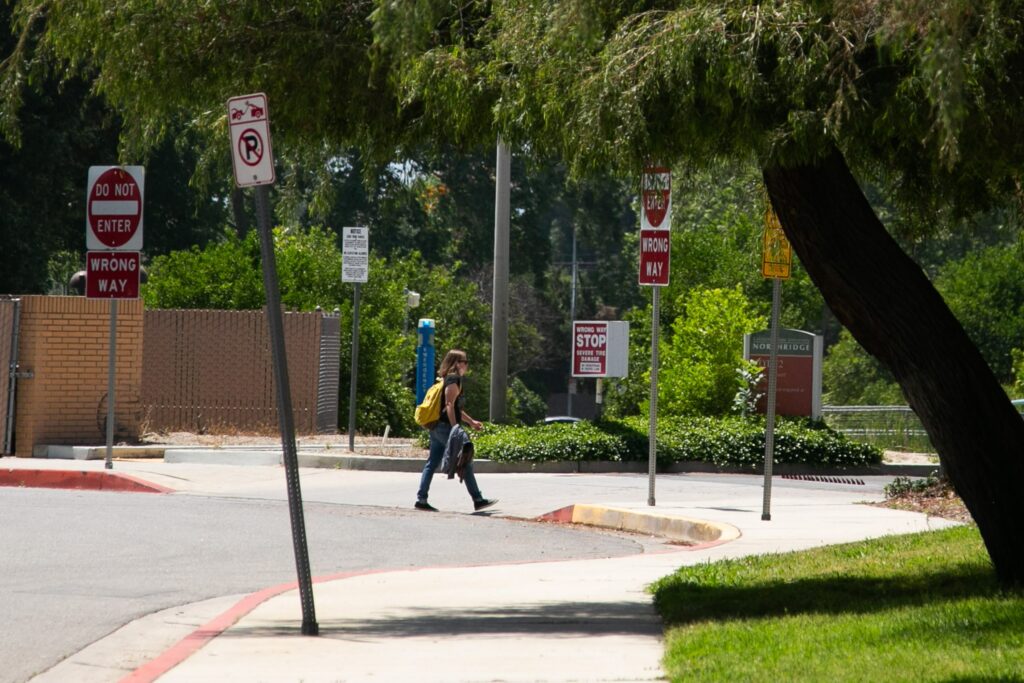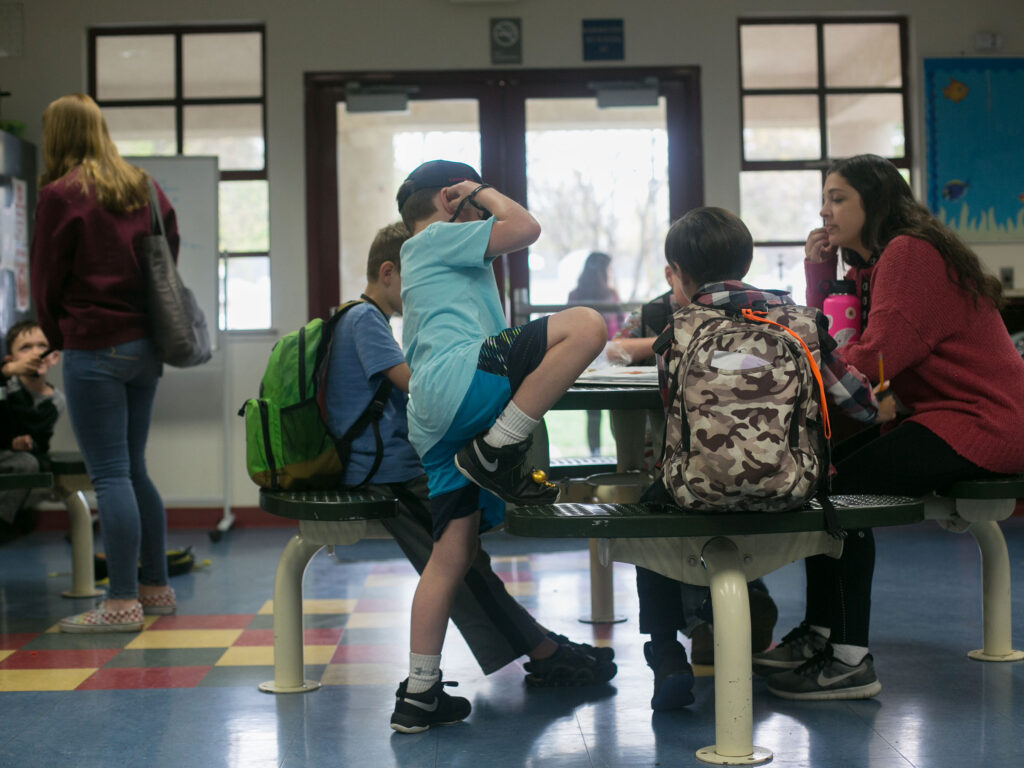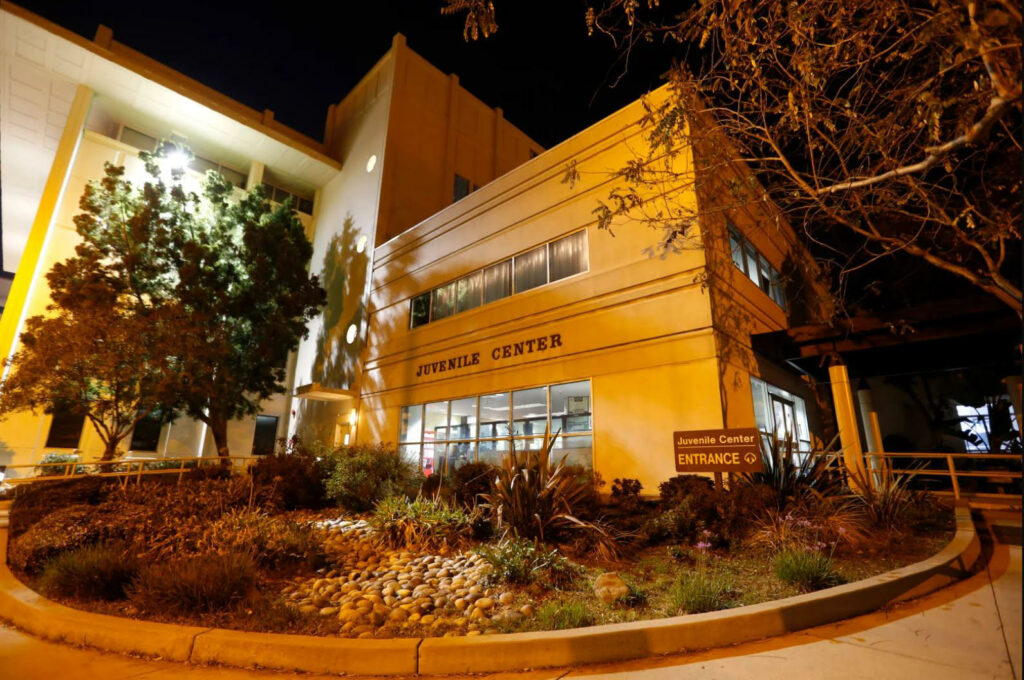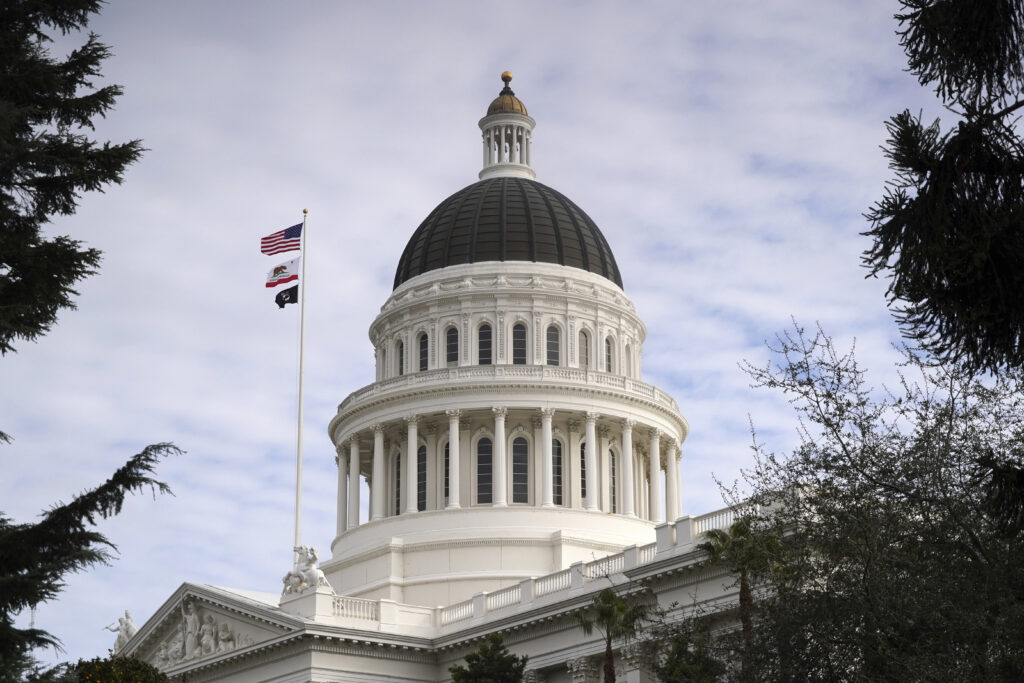
Credit: Alison Yin / EdSource
The story has been updated to clarify that the total number of children and youth in the child welfare system.
Over 70,000 children and youth in California have an open case in the child welfare system, according to the most recent point-in-time count, with over 51,000 of them also in foster care.
Many come under supervision of their county Department of Children and Family Services after a reported allegation of child neglect or maltreatment, including physical abuse, sexual abuse, exploitation or emotional abuse; for others, it happens when a parent voluntarily requests support, often due to a child’s behavioral challenges.
Children in an out-of-home placement in the child welfare system have access to particular educational rights. This is meant to ensure stability for them during a time of uncertainty.
A child under the supervision of the Department of Children and Family Services often comes into contact with multiple individuals. Depending on the details of their case, this could include social workers, child advocates, police officers, detectives, attorneys, judges and others. If they are removed from their home, they might be placed in foster care. While not all youth in the child welfare system are in foster care, all foster youth are in the child welfare system.
“When these rights were established, the purpose was to keep children in some kind of consistency, some kind of security, or something that felt just familiar to them,” said Jessica Gonzalez, youth justice program manager at CASA/LA, a national organization of court-appointed special advocates for youth in the child welfare system. CASA volunteers are sometimes appointed as educational rights holders for children. Even when they are not, they often advocate for education rights to be enforced, Gonzalez said.
A child’s case might also enter the juvenile dependency court. While the primary goal for youth in dependency court is to “preserve the family” by keeping a child either in the home of their parent or a relative, they might be placed in foster care or adopted.
Child welfare cases are complex, and outcomes depend on a multitude of factors, including the caretaking ability of a parent, whether a relative is able to take in the child, if an appeal is filed, and more.
This story includes information on whom the educational rights apply to as well as general insight into some of these rights. Many were implemented with the enactment of AB 490 in 2003 yet remain difficult to understand for many families due to the complexity of the child welfare system.
How many children are in the child welfare system?
There were 51,339 children and youth with an open case and in foster care as of April 1. The count was published by the California Child Welfare Indicators Project, a data and technical assistance collaboration between the University of California at Berkeley and the California Department of Social Services.
This point-in-time count includes those who are under the age of 1 up to age 21 and who have “an open child welfare or probation supervised placement episode” in California’s Child Welfare Services/Case Management System. The count peaked in 2016, with nearly 63,000 open cases. The lowest number of open cases occurred this year.
Allegations of child maltreatment are much higher, however; between April 2022 and April 2023, there were more than 442,000 reported allegations.
Which children in the system have access to particular educational rights?
Youth in the child welfare system and in an out-of-home placement have access to specific educational rights. An out-of-home placement can include foster homes, group homes, shelters and hotels through the Department of Children and Family Services, and other similar placements.
The purpose of these rights is to accommodate the child’s education as much as possible during a time of instability.
What are some of the educational rights for those in the child welfare system?
A child in the welfare system and in an out-of-home placement has access to the following rights, among others:
- School stability. This includes the right to remain enrolled at their school of origin, which is the school they were enrolled in at the time their child welfare case began, and the right to be transported to that school.
- Enrichment access. Youth have the right to access the same type of enrichment activities as their peers. This can include academic resources and extracurricular activities.
- Placement in the least restrictive setting. Students have the right to be placed in the academic setting that’s least restrictive, or least strictly controlled, for them to be able to achieve academic progress and success.
- Immediate enrollment. Regardless of whether a student has all the enrollment documents ready, or has had contact with the juvenile justice system, or has any outstanding fees — they have the right to be immediately enrolled in school.
Each of the rights above are nuanced and dependent on each child’s case and the decisions of their educational rights holder.
Additional information for families and children can be found by contacting the county Foster Youth Services Coordinating Program (each county’s contact can be found here) or at the California Foster Youth Education Task Force.
What does it mean to place a child in the ‘least restrictive’ academic setting?
While a least restrictive academic setting depends on age and whether a student has disabilities, it’s often considered the academic environment that’s least strictly controlled.
For a high school student, the least restrictive setting might be a traditional public school where students walk from one classroom to another on their own, with sports and special events such as prom and field trips. A more restrictive academic setting is often a nonpublic school that provides a more strictly controlled environment in an effort to assist students who have specific behavioral, emotional or academic needs.
As Gonzalez described, students are often pushed out to a more restrictive setting if they exhibit ongoing behavioral challenges — which, she says, are often a result of trauma in that child’s life.
But students “have the right to be in a setting they feel safe in, they feel comfortable in, and they’re able to learn in,” Gonzalez said. “And so, if the child has demonstrated that they’re able to do this in a very restrictive setting, we have to give that student the opportunity to then be able to practice those skills in a less restrictive setting.”
Who holds the educational rights for youth in the child welfare system?
Every child has an educational rights holder with decision-making authority regarding their education. A parent often continues having the right to make educational and developmental decisions for their child even if they lose physical custody. Biological parents lose educational decision-making power only if they are explicitly limited or restricted by the juvenile court, if parental rights have been terminated (i.e., the child is up for adoption), or if the child is in a legal guardianship.
Parents “are not always encouraged to continue to be a part of their child’s educational journey, so a lot of times what we do as CASA when we’re appointed to a case is facilitate that engagement with a parent to preserve their involvement in the child’s education,” Gonzalez said.
Most often, organizations like CASA encourage relatives to hold educational rights. This is because once a child welfare case is closed, CASA is no longer the rights holder. Advocating for the biological parents or other relatives to remain as educational rights holders helps provide continuity in the child’s life, according to Gonzalez.
In the absence of parents or relatives, the educational rights holder role is often filled by a court-appointed special advocate, which is where CASA’s name comes from.
The person assigned as the educational rights holder is entitled to have “all of the educational decision-making rights normally held by a parent or guardian,” according to a recent fact sheet compiled by the California Foster Youth Education Task Force.
How are educational decisions made?
All educational decisions should be made with the child’s best interest in mind.
For example, a child can remain in their school of origin if they prefer to. But if they’ve been placed far from that school and they would need to spend hours on the road to reach it, then it may be in their best interest to be enrolled in a new school.
The educational rights holder can request a best-interest determination meeting that would include school district personnel, such as the school psychologist, before finalizing any educational decisions.
How can an educational rights holder avoid roadblocks in advocating for a child?
While educational rights are outlined, the rights holder may experience roadblocks in enforcing them.
For example, information about a child, like academic assessments and individualized education programs, might not have yet been finalized at their school of origin and a new educational rights holder might face pushback from the new school.
In such cases, children, their families and educational rights holders can contact an education attorney through the Educational Advocacy Unit at the Children’s Law Center. If the child is also in the juvenile justice system, they can contact a juvenile resource attorney through the public defender’s office.
A significant barrier is that while foster youth liaisons at schools are designated staff members who support students in the child welfare system, they are often overwhelmed by the number of students they serve.
Gonzalez said, “It’s a lot of just constantly showing up to the school, advocating, contacting, emailing, you know, all of those follow-ups to make sure that we’re getting the right support for each child that we serve.”
